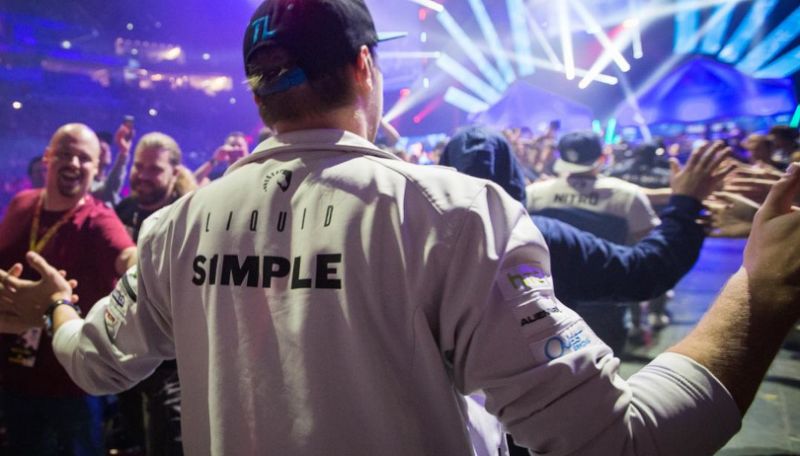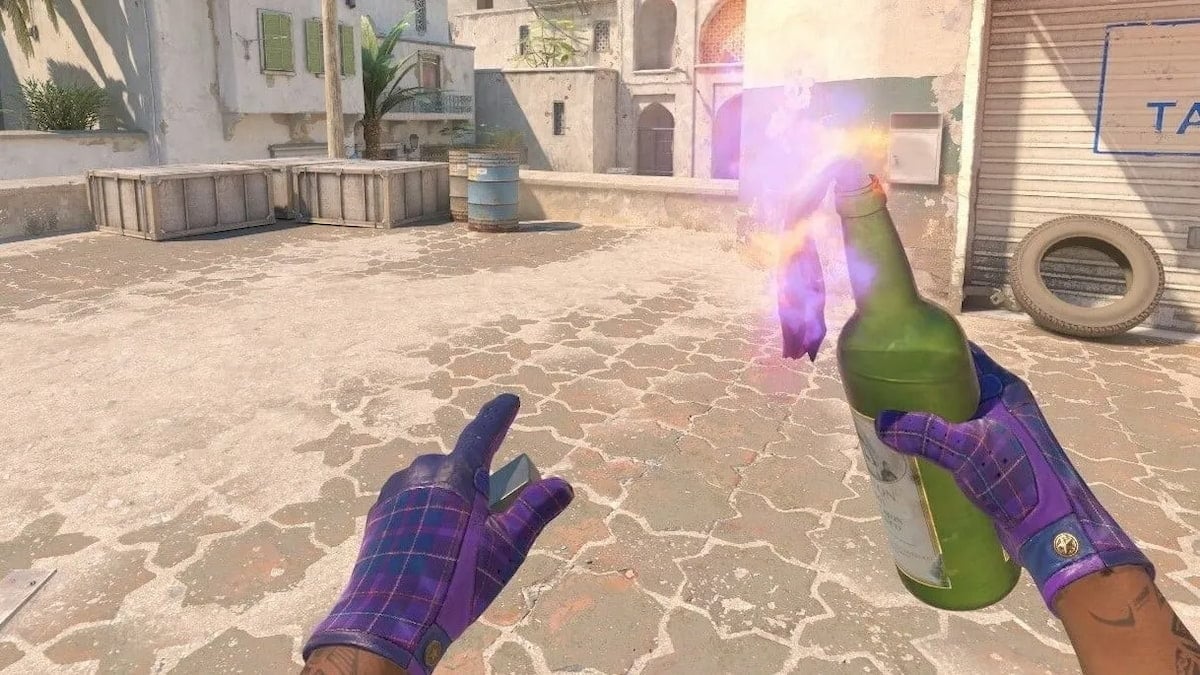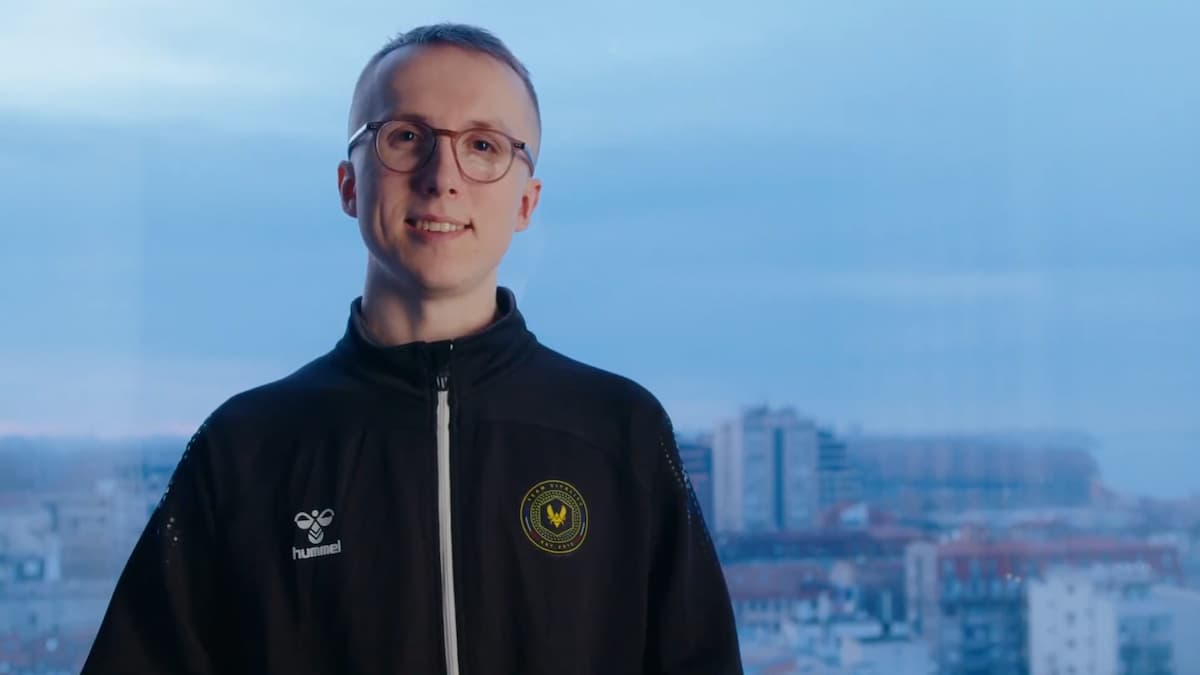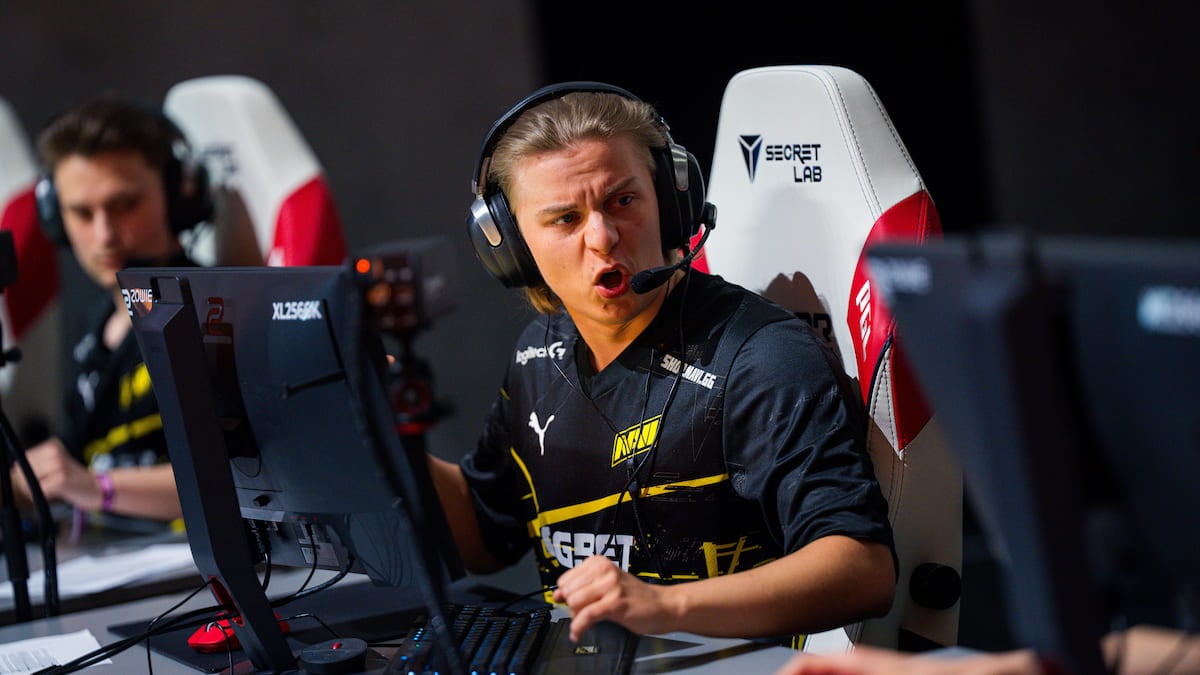Over the past two years, North American teams have increasingly become known for mistake-laden, haphazard play that led to scores of underwhelming performances in international competition. While Team Liquid were unable to complete the final act of the Cinderella story, their run up to the finals of ESL One Cologne was the best overall performance of any North American team since the inception of Counter-Strike: Global Offensive.
Liquid managed to defeat three top-10 teams in best-of-three series with another best-of-one win over Team EnVyUs to put the icing on the cake. To more accurately contextualize their accomplishment, I have dated, ordered, and summarized some other leading North American showings prior to Liquid’s ludicrous run this past weekend.
Quantic at ESEA Invite Season 13 Global Finals
- Placed: Second
- $7,000 in prizemoney
- Best-of-three wins over Team Dynamic, Team Curse, ESC Gaming, and Very Games
- Roster: Spencer “Hiko” Martin, Sam “DaZeD” Marine, Trey “tck” Martin, Carey “frozt’ Kertenian, and Kory “Semphis” Friesen
On April 19, 2013, eight months after the official release of the game, European and North Americans squads met at the Double Tree by Hilton hotel in Dallas, Texas for the first global ESEA finals in CS:GO. While a previous iteration of Virtus.Pro featuring Dosia and AdreN dropped out, many of the World’s best teams at that time, including Ninjas in Pyjamas, VeryGames, ESC Gaming, Quantic and Team Dynamic were in attendance.
Looking back, the tournament does feel fairly antiquated as it used a bizarre two-way veto system that was dependent on seeding and featured an eight-map pool which included de_Mill, but the presence of many now-widely known pros and antecedent rosters still elicits a certain curiosity.
As the LAN lacked a group stage, Quantic met the Polish ECS lineup of kuben, TaZ, NEO, Loord and Pasha in the first round of the bracket. There, Quantic dropped down into the loser’s bracket after coming up short 1-2 in a best-of-three defeat. Once in losers, however, Quantic found a special run of form as they defeated their North American rivals in Team Dynamic, which featured swag, adreN, AZK, n0thing, and Volcano. Then, after defeating the Anger and Skadoodle-led Team Curse, Quantic was again paired with ESC, who had lost 0-2 to VeryGames in the upper bracket. Quantic was up for the test this time, winning a 2-1 best-of-three, which centered around an overtime game two on de_mill.
Quantic then had to face VeryGames themselves, the French lineup of Ex6TenZ, SmithZz, kennyS, NBK, and ScreaM, who had just lost to NIP in a pair of 14-16 defeats. Months after this tournament, this Quantic roster would splinter, forcing a couple of their players to fade into relative obscurity while the French lineup would simultaneously become the best team in the world. But, in the finals of the loser’s bracket after a double overtime game one and a 16-14 game two, it was Quantic who advanced through to the finals. Like Liquid’s recent run in Cologne, Quantic were unable to contest the world’s best team in their final matchup, but their dual upset of top European teams would be a feat seldom repeated in CS:GO by any North American team.
Maps to watch:
Map two in loser’s semifinal
Map one and two in loser’s final
compLexity at DreamHack Winter 2013

- Placed: Second
- Best-of-one wins over N!faculty and Very Games, best-of-three win over Astana Dragons
- $22,000 in Prizemoney
- Roster: Spencer “Hiko” Martin, Kory “Semphis” Friesen, Braxton “swag” Pierce, Jordan “n0thing” Gilbert, and Sean “sgares” Gares.
The evolving NiP/VeryGames rivalry promised to punctuate DreamHack Winter 2013, the first Valve-sponsored major, with a spectacular finish. But, compLexity Gaming threw a wrench into the works.
Four months prior to the event, two fifths of the Quantic squad that worked wonders at April’s Season 13 ESEA LAN, Hiko and Semphis, joined forces with Sgares and two former Denial players in swag and n0thing to form a new roster under the previously prestigious compLexity banner. A few weeks after signing, coL were able to again place second in at ESEA LAN albeit against much weaker competition, but in the following months, coL only competed in one international tournament, Electronic Sports World Cup 2013, where their top eight finish awarded them no prize money.
Less than a month later at DreamHack Winter, compLexity breezed past the Danish N!faculty lineup in a 16-5 wallop on Inferno in the first map of the group stage. That win pitted them against VeryGames, who by that point, looked strictly better than NiP after defeating them in a series of tournaments in the run-up to the Major.
Ending up on Inferno again, compLexity played VeryGames close all the way through. On the 29th round with the score tied at 14-14, n0thing clutched out a 1v2 by interrupting Shox’s defuse just in time Then leading 15-14 in the 30th, compLexity were able to trade one for one when breaking into the B bombsite, but VeryGames made a very quick rotation to block off complete entry into the site. Emblematic of their looser playstyle, coL decided to the make the famous fake that would win them the game and upset the tournament favorites.
With Semphis staying behind to sell the fake at B, coL’s remaining three players moved back through banana to an unoccupied A site. Not realizing coL’s duplicity, VeryGames retook B far too slowly to make it back to A in time for a defuse, let alone a retake. With the surprise win, coL advanced to the quarterfinals, while VeryGames were forced to take second place in the group and end up on the same side of the bracket as NIP.
In the quarterfinals, compLexity faced off against Astana Dragons, who were formally the Virtus.Pro team who declined to attend the ESEA Season 13 LAN. Then, Astana were just behind NiP and VeryGames in terms of global pedigree and were again the clear favorites over compLexity. In this best-of-three, compLexity lost the first map, Nuke, by a decent margin before again shocking the world with fairly comfortable wins on Dust 2 and Inferno.
Now with Fnatic, who then still had Devilwalk and Schneider, left to beat in the semifinals, and VeryGames and NiP butting head on the other side of the bracket, it suddenly looked like compLexity had a chance to make a miracle run through the whole tournament. But as history would have it, the less frightening Fnatic managed to embarrass coL on their best map, Inferno, accumulating 14 rounds on their CT side on the way to a map one victory and a 2-0 series win.
Prior to Liquid’s more recent successes, coL’s 2013 run was the symbolic exception to extended North American mediocrity. compLexity defeated two of the very best European teams at a momentous event, setting a precedent for their fellow underperformers across the Atlantic.
Maps to watch:
Group stage best-of-one versus VeryGames
Games two and three of best-of-three versus Astana
IBUYPOWER at FACEIT League – Season 2
- Placed: Second
- IBUYPOWER at FACEIT League – Season 2
- $10,000 in prizemoney
- 1-1 with Dignitas in group stage, best-of-three win over LDLC, 1-3 in best-of-five versus Fnatic
- Roster: Sam “DaZeD” Marine, Tyler “Skadoodle” Latham, Kevin “AZK” Lariviere, Braxton “swag” Pierce, and Joshua “steel” Nissan
In late 2013 and for the majority of 2014, the same storyline in North America kept repeating. DaZed’s IBUYPOWER lineups would always outperform the compLexity/Cloud9 teams on home soil in ESEA LANs, but would fail to find comparable results abroad.
When compLexity secured a semifinals finish at DreamHack Winter 2013, IBUYPOWER bombed out of the group stage 0-2. Again, when coL contested NiP in the quarterfinals of the next Major, EMS One: Katowice 2014, IBUYPOWER were blasted out of the group stage after two losses. While IBUYPOWER’s results were ultimately cut short due to the removal of DaZed from the final Major of year and the eventual match fixing scandal, they did manage to achieve one breathtaking result internationally.
Despite featuring a more modest $50,000 dollar prize pool, the FACEIT League Season 2 LAN Finals turned out to be a highly competitive affair thanks to a higher concentration of talent in a six-team format. As per usual, IBUYPOWER struggled in the group stage, only winning one map out of four versus Fnatic and Dignitas. However, because round win totals were used as a tiebreaker, IBUYPOWER advanced without having to play a tiebreaker match versus Dignitas.
Unfortunately, placing second in the group meant that IBUYPOWER had to play LDLC, who topped group A. LDLC, the spiritual successor of VeryGames with Happy and kioShiMa replacing Ex6TenZ and ScreaM, were then the best or second best team in the world next to the new Fnatic roster with olofmeister and KRiMZ.
IBUYPOWER had shown some consistency in beating various French lineups in ESEA LANs prior to this event, but they were clearly underdogs in this matchup due to their paltry international performances up to that point. The first map of this best-of-three series was Inferno, a comfortable map for LDLC who already played it twice and won twice in the group stage. However, thanks to heavy anti-stating and a 50-kill individual performance by DaZed, IBUYPOWER managed to eke out a victory in a 58-round, triple-overtime marathon match. Then on IBUYPOWER’s map pick, Dust 2, the North Americans were able to capitalize on an 11-4 T-side and take the series 2-0.
Advancing to the finals, Fnatic proved to be too much for IBUYPOWER. But unlike Quantic or compLexity previously, IBUYPOWER continued to show off their heightened form in their last match of the tournament. On map one, IBUYPOWER again took Dust 2, winning comfortably 16-8. Fnatic were then able to take Inferno and Mirage before moving onto Nuke, which was the closest map of the series. Despite going down 13-2 on the T-side, IBUYPOWER were able to grid back rounds on CT thanks to strong individual efforts by swag and Skadoodle. IBUYPOWER made it all the way to round 30 before a bizarre communication error involving Skadoodle gave Fnatic an uncontested entry into the lower bombsite. From there, Fnatic held the retake and took map, match and tournament.
Looking back, the result is certainly tantalizing. Were IBUYPOWER past whatever block they seemed to have on European soil? What would have happened if DaZed played in the Major? Could the super-team have been consistently great? Were IBUYPOWER one-hit wonders or world beaters? Unfortunately, we will never know.
Maps to watch:
Map one versus LDLC
Cloud9 at FACEIT 2015 Stage 2 Finals at DreamHack Valencia 2015

- Placed: Second
- $20,000 in prizemoney
- Best-of-one wins over Kinguin and Na’vi, best-of-three win over Fnatic
- Roster: Jordan “n0thing” Gilbert, Sean “sgares” Gares, Mike “shroud” Grzesiek, Tyler “Skadoodle” Latham, and Ryan “fREAKAZOiD” Abadir
In late April 2015, after a disastrous showing at the ESEA Season 18 LAN and an extended series of dwindling results, Cloud9 cut Semphis and Hiko’s replacement, ShahZaM, leading to the pickup of Skadoodle and fREAKAZOiD. Initially, they failed to impress after bombing out at tournaments such as Gfinity Spring Master 2, but by mid-summer, Cloud9 put together the best multi-tournament run in the history of North American CS:GO.
All three of their second places finishes at ESL ESEA Pro League Season 1 Finals, Electronic Sports World Cup 2015, and FACEIT 2015 Stage 2 Finals, had their own merits, but it was the FACEIT result that was their best. At the first two tournaments, Cloud9’s appearance in the final was predicate on advancing through the group stage before beating a North American team— CLG in ESEA Pro and Liquid in ESWC— and Team EnVyUs in the bracket stage.
While CLG and Liquid were already picking up steam in North America following the dismemberment of IBUYPOWER, the pre-Hiko Liquid were not yet contenders internationally and CLG had just picked up JDM and were months away from peaking. As for EnVyUs, they had a been a dominating team alongside Fnatic after leaving the LDLC organization, but during this small period in the summer, they seemed to show very little of their former prowess as internal strife apparently ruined their results leading to their breakup post-ESWC. To make the FACEIT final, Cloud9 had to advance through three bonafide worldwide top ten teams in Kinguin, Na’Vi, and Fnatic.
Cloud9’s first match in the group stage was against Kinguin, the much hyped mixed team. They met on Dust 2, which had increasingly become a Cloud9 specialty thanks to Skadoodle’s proficiency with the AWP on that specific map. After taking a 10-5 lead in the first half, Cloud9 easily closed it out on CT, 16-7. Cloud9 then went up against Na’Vi, who had just defeated them in the grand final of ESWC, which occurred just a week prior. With three vetoes each, Cloud9 and Na’Vi ended up on Cobblestone, which had not been played in the previous week’s finals. On Cobble, the first half ended 8-7 with Cloud9 taking the slight round advantage on their T side. Once on CT however, Cloud9 jumped out to a huge lead after taking CT pistol and eventually racked up a 14-7 lead. That lead eroded quickly as Na’vi started to grind out T rounds, but thanks to a fortunate forcebuy on round 30, Cloud9 took the win 16-14.
Moving out of groups, Cloud9 had to face the world-leading Fnatic lineup who had also just defeated them in the deciding match of the Season 1 Pro League finals. In the first game of the series, Fnatic picked Mirage, another map that had not been played in their previous matchup. Somewhat surprisingly, Cloud9 took this map in dominating fashion after winning both pistols and putting up 11 rounds on their T side. Moving into Cloud9’s pick, Train, yet another map that was not played in their previous series, the contest was much closer. Cloud9 took nine rounds on their opening CT side and found a commanding 12-7 lead in the wake of winning the first gun round on T side. With their stars apparently having an off event, JW and pronax were able to step up for Fnatic and bring it to 15-15 by the end of regulation, but the combined performances of n0thing, shroud and Skadoodle were ultimately too much as Cloud9 put together another lock-down CT defense in overtime.
In the finals versus Team SoloMid, Cloud9 failed to find their footing and lost in successive maps on Cache and Mirage which ended their supercharged three-tournament form. While this specific tournament result may be eclipsed by Liquid’s later showings in 2016, for one month in the summer of 2015, a North American team looked globally elite for the very first time in CS:GO, but this tournament would be the last exceptional result for this five-man lineup.
Maps to Watch
Best-of-one versus Na’vi in group stage
Map one and two of best-of-three versus Fnatic
Liquid at MLG Columbus

- Placed: Top-Four
- $70,000 in prizemoney
- Roster: Spencer “Hiko” Martin, Nick “nitr0” Cannella, Jonathan “EliGE” Jablonowski, Oleksandr “s1mple” Kostyliev, and Eric “adreN” Hoag
- Best-of-one wins over Fnatic and Faze, best-of-three win over CLG
After adding Hiko into the mix in September, Team Liquid showed potential in their late 2015 performances but had few notable results. To bluster their already talent-rich lineup, Liquid traded out FugLy for S1mple, Ukraine’s disgruntled and displaced superstar, on January 2, 2016.
With S1mple in the lineup, Liquid somehow looked less functional. They accumulated mixed results online, which included embarrassing losses to a strip-mined compLexity roster in their first game together and a fledgling OpTic team in the closed CEVO qualifiers. In response to these results and heavy community criticism, Liquid decided to drop their underperforming in-game leader adreN for Enemy’s former star, Koosta. However, due to rulesets surrounding the Minor Championship Series, Liquid were forced to still use adreN for the time being. With adreN, Liquid struggled to make it through to the Main Qualifer of MLG Columbus, and expectations were less than rosy going into the Major.
Pitted against FaZe Clan, the new rendition of Kinguin, in the first round of the groups, Liquid were luckily able to play on Cache, which would prove to be their best map over the course of the tournament. Liquid started with a dominating 12-3 T-half, with adreN actually standing out as one of Liquid’s best performers alongside Nitr0. On CT, Liquid let a surprising amount of rounds go before finally closing it out 16-11.
Next up, Liquid had to go up against the new Fnatic with Dennis, who had still been a world-leading team but never looked as dominant as the pronax-led Fnatic. Meeting on Dust 2, Liquid and Fnatic each won 10 rounds on their respective T-sides, leading to a double-overtime contest. Liquid secured post-regulation play thanks to a clever B-side stack on round 30, but in overtime, Liquid out-skilled rather than out-smarted Fnatic on their CT sides leading to their eventual victory.
In the quarterfinals, Liquid were lucky enough to be paired against their fellow North American hopefuls, Counter Logic Gaming. While all evidence suggests that CLG were still a competent team at that time, Liquid were able to win far more comfortably on Cache and Mirage with S1mple leading the charge. But that win would couple Liquid with Luminosity in the semifinals.
On Mirage, Luminosity’s map pick, Liquid lost a series of gun rounds mid-half, which put them at an 8-7 deficit going into their T-side. However, Liquid were able to turn the tables after winning T-pistol and seven of the next eight rounds. Then, famously, Liquid crumbled after hitting 15. A score of individual plays, such as coldzera’s jumping AWP 4K B-hold, won Luminosity an unbroken series of rounds, leading to an overtime 19-15 win.
Next on Cache, the same story more or less repeated. Liquid took an even more commanding lead, going up 15-6, but failed to drag themselves over the finish line. There were again big individual plays by Luminosity, including multi-kill A holds by Taco with an auto-sniper, but in the eyes of most, Liquid’s eventual defeat in overtime was a matter of self-strangulation rather than immaculate play by their opponents.
While Liquid’s choke and an injured Olofmeister sours their results somewhat, defeating the world’s former top team and going toe-to-toe with the eventual two-time Major champions is far from a blot on your résumé.
Maps to Watch
Best-of-one group stage match versus Fnatic
Maps one and two in best-of-three versus Luminosity
For compliments or complaints, you can find me on Twitter @WallabeeBeatle.






Published: Jul 14, 2016 02:14 pm